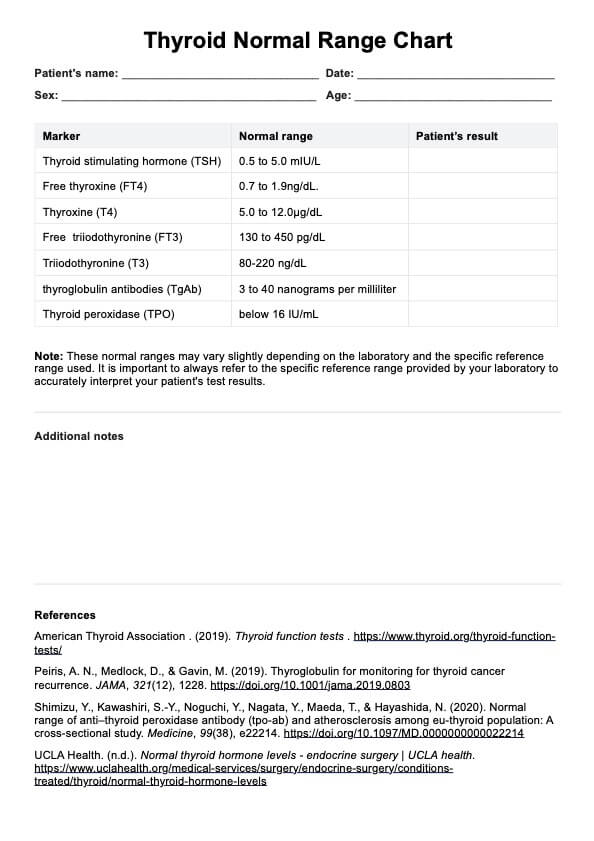No. You must conduct other thyroid tests to confirm the possibility of thyroid disease and then diagnose the patient’s specific thyroid problem. The chart helps determine whether your patient’s thyroid hormone levels and antibodies are in the normal/optimal range. Thyroid test results charts are crucial for interpreting these tests.

Thyroid Normal Range Chart
Learn about the normal thyroid hormone ranges and download our Thyroid Normal Range Chart PDF template!
Thyroid Normal Range Chart Template
Commonly asked questions
It’s likely due to differences in the populations they’ve studied, especially the locations of those populations. Each lab might also have different testing methods, including using different units like miu/l or mu/l for TSH levels. This is why we made our template editable so you can input your lab's normal/optimal reference ranges.
It depends. Most doctors schedule this because it would be best for patients to indicate if they’ve been taking certain medications. These might affect the results. Besides, they don’t have to fast unless they’re taking other tests alongside the thyroid function test.
EHR and practice management software
Get started for free
*No credit card required
Free
$0/usd
Unlimited clients
Telehealth
1GB of storage
Client portal text
Automated billing and online payments











